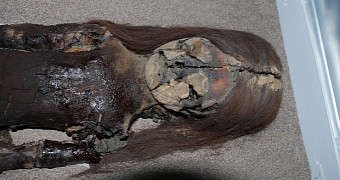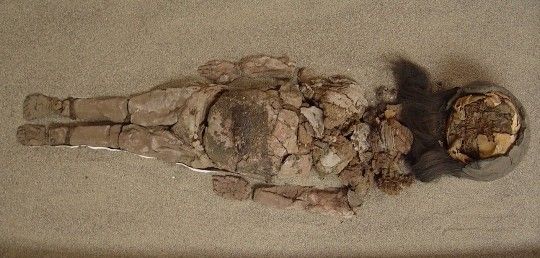The University of Tarapacá’s archaeological museum in the city of Arica in Chile is home to almost 120 millennia-old mummies and hundreds others are lurking all across the country, as well as in Peru, waiting to be discovered.
The mummies were left behind by an ancient people known as the Chinchorro. Thousands of years ago, this people populated the coastline of present-day Chile and Peru. They were hunter-gatherers and the first to mummify their dead.
Thus, some of the Chinchorro mummified bodies unearthed over the years date back to around 5,000 BC. Researchers say this makes them the absolute oldest man-made mummies ever discovered anywhere in the world.
The trouble is that, as of recently, the dozens of mummies housed by the University of Tarapacá’s archaeological museum have started to degrade. In fact, some are gradually turning into a black ooze.
Evidence indicates an increase in humidity is to blame
In a report, Harvard University scientist Ralph Mitchell and fellow researchers in North America and Europe explain how, in an attempt to explain this peculiar phenomenon, they obtained tissue samples from the degrading mummies and carried out a series of experiments.
More precisely, the specialists collected some of the microbes growing on the degraded mummy skin and placed them on pig tissues that they then exposed to various humidity levels. The goal was to establish how much humidity the microbes needed to thrive.
It was thus discovered that the humidity levels that best suited the microorganisms were the same as the ones inside the University of Tarapacá’s archaeological museum. What this means is that the mummies here are degrading because of too much humidity in the air they are exposed to.
Mind you, this museum in Chile was not always this humid. Hence the fact that the mummies survived in this location for decades without ever showing signs of degradation. However, it looks like they are now suffering the effects of shifts in the local weather.
Apparently, Chinchorro mummies are best kept at humidity levels of about 40 to 60%. Now that they know this, museum officials can take steps to protect the ones in their care. The ones that are still buried in the ground, however, risk being destroyed in the years to come.
“What about all of the artifacts out in the field?” Mitchell asks. “How do you preserve them outside the museum? Is there a scientific answer to protect these important historic objects from the devastating effects of climate change?” asks researcher Ralph Mitchell.
How the Chinchorro mummified their dead
The Chinchorro people along the coast of present-day Chile and Peru started mummifying their dead, be it men, women, children or even fetuses, a couple thousand years before ancient Egyptians got the hang of this practice. By the looks of it, they were quite good at it.
Researchers who have had the chance to examine mummies left behind by this ancient people say that the Chinchorro started by removing the brain and all the other major organs in the body. The empty skull was filled with straw or ash and a stick was used to secure the spine.
Whatever skin was damaged while removing the organs was patched with skin taken from animals, especially sea lions. Once sewn back, the body was covered with a special paste that served to protect it from degradation. This simple treatment helped preserve Chinchorro bodies for millennia.

 14 DAY TRIAL //
14 DAY TRIAL // 

